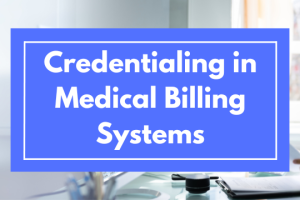Google is the world’s largest search engine and its integrated tools — like Google Maps — can help your practice reach new patients with ease. If you’re wondering how you can use Google to advertise your business, it’s important to recognize that paid ads are only a small part of the equation. Here’s a look at the three primary areas you should be investing your time in so you can leverage all that Google has to offer.
Google My Business (GMB)
Google My Business is more than a profile, it’s a free hub where you can manage your presence in Google search and on Google Maps. Creating your profile won’t cost a penny, but you will need to verify your information using your email, phone number, or video verification. You may be asked to use a few methods, especially if you’re trying to claim ownership of a pre-existing profile for your business.
Once you’ve verified that you are the rightful owner of the GMB listing, you’ll be able to edit and add information with ease. Some of the things you should do right away include:
- Add your location and hours
- Add your website and phone number
- Upload photos of your practice and team
- Note any health and safety measures (ex. mask requirements)
- Add attributes like LGBTQ+ friendly
The above information can be updated as often as needed, but you probably won’t need to alter it that often. However, you might periodically log into your Google My Business account to handle posts, offers, events, and reviews.
Anyone can leave a review for your practice and responding to reviews (both negative and positive ones) is important for maintaining your practice’s reputation. Google also has a means of requesting the removal of inaccurate or fraudulent reviews and it’s important to stay on top of it in case of spam.
Lastly, you can activate a direct messaging feature that lets patients and potential patients contact your practice with ease. This is great for confirming holiday hours, wheelchair accessibility, and other details. Plus, GMB allows you to post public answers to frequently asked questions to save your team time.
Google Analytics
If your practice has a website as it should then finding ways to improve your search engine rankings is an essential, ongoing activity. When it comes to tracking and improving your rankings in Google, there’s no better way to do it than with Google Analytics.
Google Analytics is a free tool that allows you to understand who’s visiting your site and what they’re doing while they’re there. For instance, in addition to the number of visitors you get, you can see where they came from (i.e., the search term or referring link), their geographical location, the device they’re using, and more. On your site, you can even see what pages they visited and how long they spent on each one.
Understanding how to leverage Google Analytics can take some time, especially if you’re not familiar with analytics tools. However, Google Analytics has come a long way in recent years and it’s generally quite user-friendly. Plus, Google has plenty of documentation and tutorials to help you get the most out of it. With that in mind, here are some key features to look at:
- Keyword Analytics: Tracking the search terms that your business ranks for and how you gain and lose terms over time can help you develop an SEO strategy. For instance, if you see that a certain keyword is driving a lot of traffic for your competitors, you can build content around it on your site to rank better for it and more get traffic of your own.
- Traffic Sources: Not all of your traffic will come from search. In fact, you may see that most of your traffic is referred from social media posts you share or email newsletters that you send. Knowing your best traffic sources can help you understand where engagement is happening.
- New vs. Returning Traffic: Having a good deal of returning visitors is good as it means there’s a reason for them to keep coming back to your site. However, you also want a good balance of new traffic, as that represents the potential for new patients.
- Bounce Rate: The bounce rate is a specific metric that tells you what percentage of your visitors click away almost as soon as they land on your site. A high bounce rate (more than 55%) could indicate that your website is visually unappealing, slow to load, or doesn’t give them the impression that you can meet their needs.
- Most Visited Pages: Metrics like the most visited pages can tell you what the typical search intent is for someone visiting your site. For instance, if most of your traffic ends up on the contact page, you could make contacting you even easier by including your phone number in the header and an appointment booking button on every page to make it easier for users to fulfill their goal.
There is a lot more to learn about Google Analytics, but the most important takeaway is that you should absolutely be using it for your practice. Even if you have no intention to invest in search engine optimization (SEO) right now, Google Analytics can begin collecting valuable information about your users that you’ll be able to leverage down the road for SEO and advertising purposes.
Google Ads
Google Ads (formerly Google AdWords) allows you to put your practice in front of a targeted audience in Google Search and on YouTube and third-party websites that participate in the Google Ads network. Google Ads represent one of the most popular forms of PPC (Pay-Per-Click) advertising and, so long as you have the right audience data, you can see major returns from your campaigns.
Setting up Google Ads can be daunting, especially if you’re like most practices and don’t have a dedicated marketer or copywriter on your team. However, while you might outsource the copywriting, the actual setup is easily something that your practice can do on its own. Plus, if you have Google Analytics tracking your website data already, then you can take away much of the guesswork associated with targeting.
Google Ads allows you to control where your ad is displayed. The most common is in search results where it will appear as one of the top three results above all organic search results on the first page. In other words, it’s a way to instantly climb to the top of the page above all of your competitors without investing months into SEO. While you’ll have to pay to be there, it’s a great way to drive traffic and appointments, as long as you target the right keywords.
The way that Google Ads works for search ads is simple:
- Design your ad using Google’s intuitive preview feature. You’ll be able to see how the ad will look in real-time as you write the title and call-to-action.
- Choose a landing page for your ad, which may be your homepage or a dedicated page that explains a specific service or guides the user in completing a goal (like booking their first appointment).
- Select the search terms for which you’d like your ad to appear. For instance, this keyword may follow the format of “[service] in [city],” like “pediatric eye care in Spokane.”
- Narrow down your audience further, if you desire, by excluding searchers based on location, age, gender, and other demographics. This can help you stretch your budget by only showing your ad to the ideal users who are most likely to convert.
In order to control your Ad spend, Google lets you set your budget in a few different ways. For instance, you can set a maximum cost-per-click, a daily spend cap, or a total spend cap for each campaign. It’s worth taking the time to follow Google’s tutorials so that you can set up a winning campaign from the start, without wasting money on trial and error.
All in all, especially when combined with Google Analytics, Google Ads can be one of the most powerful tools to grow your practice. Plus, you can get a free $500 ad credit when you sign up!










